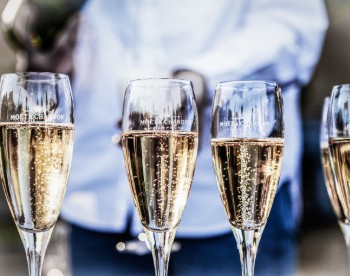Pop! Clink! Fizz! You know what time it is, right? Needless to say, there’s always a good reason to drink bubbly. It’s the ultimate in celebratory beverages, and is practically a given at major life milestones, from birthdays to graduations and weddings. But here comes the clincher for most people: are you drinking Champagne or MCC? Don’t worry – we’re here to help you figure it out.
[happyforms id=”19521″ /]
The Lowdown
Much like tomato vs. tomahto, technically speaking, Champagne and Méthode Cap Classique are the same thing. Of course, this is technically speaking. If you know even a little bit about wine, you might have realised that it is a culturally-entrenched product of society. And sparkling wine is by no means an exception – in fact, it might well be the rule.
Due to sought after cultural property and location branding, you can’t – and shouldn’t – think of Champagne and Méthode Cap Classique as the same thing.
On Champagne
Bottom line: Champagne can only be called so if it is produced within the Champagne region of France.
While there are a number of different ways to coax bubbles into a bottle of wine, the original method pioneered by the French has been upheld for centuries as the gold standard – and France isn’t about to let anyone forget that. Indeed, the claim to this method – the méthode champenoise – is so jealously guarded that France has ensured, through a series of international treaties, that there are serious legal consequences for anyone outside of the Champagne region who dares to use the name ‘Champagne’ on their product. That exclusivity factor is what makes it so special (and pricey, we might add).
And so, as a direct result, anything produced outside of the area needs to sport a different name, be it Cava in Spain or in South Africa, Méthode Cap Classique (i.e. the Cape Classic Method), often abbreviated to MCC.
The Real MC
MCC is made using the exact same traditional méthode champenoise method, which is to create a second fermentation in the bottle. The grapes used for crafting MCC are typically picked at the start of harvest, while the sugar levels are still low. The grapes are then pressed and fermented, whereafter additional sugar and yeast is added to allow the mixture to undergo a second fermentation during which time the bubbles we love are formed.
With a smorgasbord selection of terroir within the Cape, and some serious talent in the cellars, it should come as little surprise that our local winemakers are producing some outstanding bubbles – and at a fraction of the cost when compared to its French counterpart. Top examples include Le Lude, Môreson and Charles Fox.

The Final Judgement
The question stands: Is Champagne better than MCC? Ultimately, it is each person for themselves. Champagne does have a certain magic to it – perhaps it has to do with the delicate, biscuity, butterscotchy taste or the prestige of it being the ‘real deal’.
Of course, being a South African-based company, we have a penchant for local bubbles. While there is a certain je ne sais quoi that comes with forking out the big bucks for a true Champagne (and don’t get us wrong, it does have its place!), we’ve tasted some of our country’s finest MCC and are convinced that it’s the best value-for-money bubbly in the world.
Wherever you are, find a reason to celebrate and explore the Cape’s MCC producers in the winelands. We have a few secret spots that will be sure to knock your socks off and would be happy to take you there!
Planning a trip?
Want to know more or have any questions, let an Explore Sideways expert help you plan an experience you will never forget!
